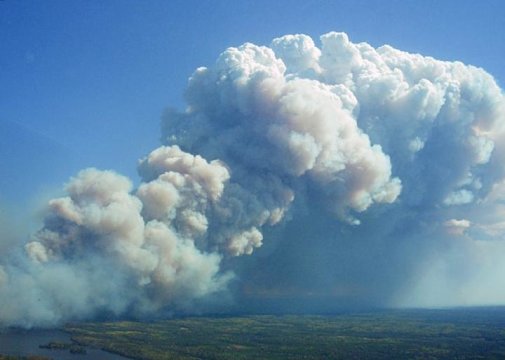[ad_1]
The weather plays a significant role in how a wildfire grows, how fast it spreads, and how dangerous it can become for firefighters, but few tools exist to help fire managers anticipate days when weather conditions will have the greatest potential to make wildfire erratic or especially dangerous. The USDA Forest Service is expanding the options with the Hot-Dry-Windy Index (HDW), a new fire-weather prediction tool based on the key atmospheric variables that affect wildland fire: temperature, moisture, and wind.
“Predicting fire conditions is important and extremely difficult,” said Joseph Charney, a research meteorologist with the Forest Service’s Northern Research Station in Lansing, Mich., and a member of the research team behind HDW. “By focusing on just temperature, moisture and wind, we created a tool that works with the same weather models that are used every day in fire weather forecasts, and thus can be applied anywhere in the world, regardless of fuel conditions or topography.”
Alan Srock of St. Cloud State University is the lead author of a study describing HDW and its performance; co-authors include Charney, Brian Potter of the Forest Service’s Pacific Northwest Research Station, and Scott Goodrick of the Southern Research Station. The study was published in the journal Atmosphere.
To test how accurately HDW predicts dangerous fire days, the scientists compared its predictions with fire behavior recorded during four recent wildfires in Minnesota, Texas, New Jersey and California. Researchers found that HDW performed better than an existing fire weather index called the Haines Index in identifying the day during each fire that was the most difficult to manage.
One caveat the researchers make is that HDW is designed to anticipate when large-scale weather can affect a wildland fire; it is not designed to account for fine-scale weather, topography, and fuel conditions that affect fire behavior and can contribute to major management difficulties.
As an aid to giving fire officials context for HDW values, the research team collaborated with Jessica McDonald of Texas Tech University to develop a 30-year HDW climatology that establishes locally and seasonally high HDW values for specific locations. These climatological values provide insight that can help fire managers who may not be from the local area evaluate whether temperature, humidity or wind speed are normal or not.
While its performance so far is promising, more research is needed before HDW is ready to be used on an operational basis. “The HDW Index was designed to address the needs of the wildland firefighting community, and our early results show that HDW has the potential to help users make better decisions,” Srock said.
Story Source:
Materials provided by USDA Forest Service – Northern Research Station. Note: Content may be edited for style and length.
[ad_2]















